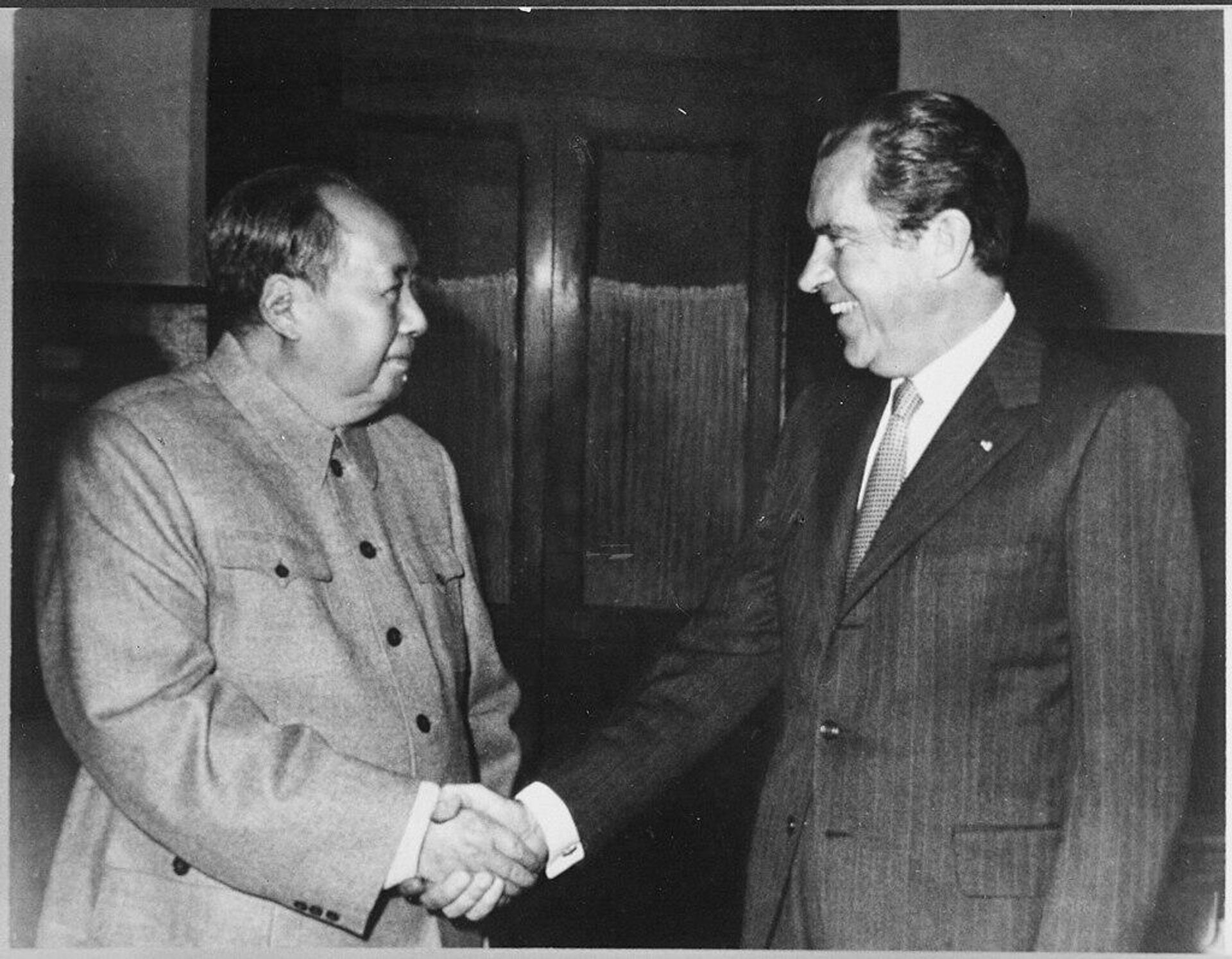50 Years Since Shanghai Communique Laid Out Program for Peaceful Coexistence Between China, US
19:46 GMT 28.02.2022 (Updated: 12:43 GMT 19.06.2023)
Subscribe
At the conclusion of then-US President Richard Nixon’s historic trip to the People’s Republic of China in 1972, he and Chinese premier Zhou Enlai issued a joint statement promising peace, cooperation, and mutual coexistence. Half a century later, those lofty promises seem further than ever.
From February 21 until February 28, 1972, Nixon, his entourage, and the American press corps visited Beijing, Hangzhou and Shanghai, and Nixon’s meetings with Zhou and Mao Zedong, chairman of the Central Military Commission and of the ruling Communist Party of China (CPC), paved the way for the formal normalization of relations seven years later in 1979.
In 1949, the communists established the People’s Republic of China in Beijing after emerging victorious in the long civil war over the old Republic of China. While the Red Army succeeded at conquering all of mainland China, it was unable to cross the Taiwan Strait, so the RoC persisted as the government in Taiwan, even as the PRC claimed Taiwan as a Chinese province in rebellion. The US, staunchly anticommunist, continued to support the RoC’s claim to be the legitimate government of all of China.
However, by the early 1970s, the global political stage had changed considerably, and Henry Kissinger, Nixon’s national security adviser and a shrewd practitioner of realpolitik, thought it would be to Washington’s advantage to change its position toward China.
A similar attitude was also emerging in Beijing. The fracturing of the alliance between China and the Union of Soviet Socialist Republics (USSR), originally over different visions for how to build socialism and which of the two nations should lead the growing global community of socialist states, became increasingly bitter as the 1960s wore on, and Mao eventually conceived of Moscow as the greater threat to China than Washington was.
Kissinger called his strategy “triangular diplomacy,” taking advantage of the contradictions in the intra-communist rivalry between the PRC and the Soviet Union in order to keep them from resolving their differences. If Beijing and Moscow ever became reunited, Kissinger realized, their combined power could deny Washington the ability to behave hegemonically in Eurasia and the Pacific.

Chinese leader Mao Zedong and US President Richard Nixon shake hands in Beijing on February 21, 1972
At times, this meant encouraging Detente with the Soviet Union and weighing the option of airstrikes on Chinese nuclear test facilities to keep them from developing nuclear weapons; at others, it meant Kissinger sneaking into China via Pakistan in order to hold a secret meeting with Zhou Enlai that would reverse 30 years of pro-Taiwan diplomacy.
That secret operation, codenamed “Operation Marco Polo,” took place in July 1971 and was such a resounding success that it paved the way for Nixon’s highly publicized February 1972 visit, at the end of which he and Mao signed the communique at the Jiangjiang Hotel in Shanghai.
The communique was issued at the close of Nixon’s seven-day tour, and saw the two nations lay out their visions for how to achieve “a just and secure peace,” as the American side put it. Mao and Nixon expressed their regrets at having severed relations for so long, and pledged to work toward normalization of relations as they both believed it was in the best interest of all of humanity.
“There are essential differences between China and the United States in their social systems and foreign policies,” the joint statement said.
“However, the two sides agreed that countries, regardless of their social systems, should conduct their relations on the principles of respect for the sovereignty and territorial integrity of all states, non-aggression against other states, non-in-terference in the internal affairs of other states, equality and mutual benefit, and peaceful coexistence. International disputes should be settled on this basis, without resorting to the use or threat of force. The United States and the People's Republic of China are prepared to apply these principles to their mutual relations.”
On the topic of Taiwan, Beijing asserted that the island is an inalienable part of China and its liberation was solely an internal affair. “The United States acknowledges that all Chinese on either side of the Taiwan Strait maintain there is but one China and that Taiwan is a part of China,” the communique reads. “The United States Government does not challenge that position. It reaffirms its interest in a peaceful settlement of the Taiwan question by the Chinese themselves.”
The format of stating the two sides’ positions separately, as well as noting their areas of agreement, was Zhou’s idea, not Kissinger’s. According to the South China Morning Post, Kissinger had presented a draft for a single, united statement of joint beliefs, which Zhou found insulting.
“This is useless: this is a typical diplomatic document that papers over differences. It’ll have no credibility, because how can two nations that have hated each other and fought each other and been isolated from each other for 22 years, suddenly put a document out like this that suggests they’re friends?” Zhou asked Kissinger.
It took another seven years of negotiation before China and the US opened embassies in each others’ capitals in March 1979, and another two communiques before economic, social, and cultural ties were cemented, and all the relevant issues relating to the US’ relationship with Taiwan were addressed. However, the US has notably not kept a key part of the final communique in 1982, in which it pledged to end weapons sales to Taiwan.



